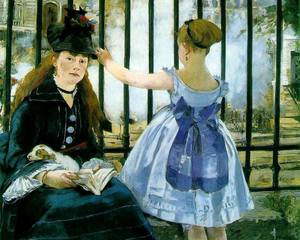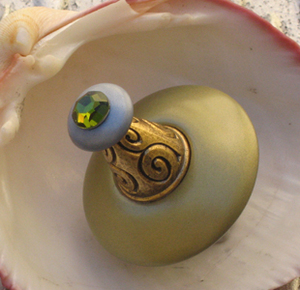For feminist critics, Mary Shelley’s Frankenstein illustrates women’s roles and the circumstances they
endured during the nineteenth century. However, critics such as Johanna M. Smith argue concerning what the primary focus should be in the text. They understand that the women in the text are illustrated according to the ideals of a nineteenth century male-dominated society, but their analyses begin to differ outside of that criticism (“Feminist Criticism and Frankenstein” 297).
Numerous critics focusing on Frankenstein emphasis the traditional roles that Caroline and Elizabeth play, but these critics diverge on their interpretation of the deeper meaning behind these roles. Smith explains that Elizabeth highlights the commonly held conceptions or ideals of women during the period and that she ” . . . is a veritable catalog of ideologically sound feminine qualities” (“Cooped Up” 314). Smith argues that Elizabeth ultimately represents a failure of the domestic sphere to guard against temptation. Mary Poovey agrees that Elizabeth represents a “domestic harmony,” but Poovey diverges her argument from Smith’s on the point of how Elizabeth’s feminine qualities affect Victor and the progression of the story.
Poovey states that through the idealization of Elizabeth, “Shelley prepares to heighten the devastating social consequences of Frankenstein’s imaginative transgressions . . .” (96). Cynthia Pon also concludes that the females in Shelley’s Frankenstein are “. . . the socially inferior . . .” who “. . . are excluded from the ideal and practice of generic humanity” (36). According to Pon, these depictions of women in Frankenstein allow “masculine humanity” to recognize its own image (36).
Feminist critics analyze these vexing issues of female role and depiction in Frankenstein hoping to find a common or overlapping interpretation. I want, however, to expound upon these commonly held criticisms and to, ultimately, present a new model of femininity and the domestic sphere in Frankenstein. The women in Frankenstein are representations of the private domestic life, but Caroline Frankenstein is the ultimate manifestation of that ideal, and her death signifies Victor’s departure from the domestic sphere.
While it cannot be disputed that Elizabeth also embodies this ideal of femininity, her role in the text, to a greater degree, is that of depicting Victor’s selfishness and disregard for the sacred. Shelley depicts Elizabeth as sacred and revered. Victor describes Elizabeth as “. . . a being heaven-sent . . .” with “. . . a celestial stamp in all her features” (43; ch.1). This description of Elizabeth further assembles the idea that Elizabeth is not the primary symbol of femininity. Femininity in Frankenstein entails sacrifice and descending into worldly circumstances and affairs.
When Victor explains his initial meeting with Elizabeth, the reader comes to understand the role that Elizabeth will ultimately play in the story: She is Victor’s desire and obsession. Victor’s statement that “. . . since till death she [Elizabeth] was to be mine [Victor’s] only” is the ultimate illustration of Victor’s selfishness and disregard for humanity (44; ch.1). Victor further illustrates Elizabeth ‘s role in the text as a magnifier of his selfish nature when he explains how his emotions were so completely altered by her presence:
Elizabeth alone had the power to draw me from these fits; her gentle voice would soothe me when transported by passion, and inspire me with humanly feelings when sunk in torpor. She wept with me, and for me. When reasoned returned, she would remonstrate, and endeavor to inspire me with resignation. (163; ch.22)
Elizabeth is essentially a figure that promotes the depiction of Victor’s nature. With that depiction, it can not be questioned that Elizabeth’s primary role in the text is to magnify Victor’s character.
Victor’s mother, Caroline Frankenstein, is, however, the primary representation of the domestic sphere. While Elizabeth functions as the magnifier of Victor’s character, Caroline devotes her complete existence in the text to the expansion of the feminine ideal. Although, Elizabeth’s beauty is mentioned by Victor on multiple occasions, the reader learns little about Caroline’s looks. In the sentence first mentioning Caroline, the reader learns not of her beauty, but that she “. . . attended [her father] with the greatest tenderness” (41; ch1). Caroline’s entire existence in the story represents sacrifice and virtue.
Victor says, “There was a show of gratitude and worship in his [father’s] attachment to [his] mother . . . for it was inspired by reverence for her virtues” (41; ch.1). Further, Victor explains that ” . . . her health, and even the tranquility of her hitherto constant spirit, had been shaken by what she had gone through” (42; ch.1). Sacrifice and virtue are the embodiments of femininity in Shelley’s Frankenstein. The ultimate sacrifice in Frankenstein occurs when Caroline decides to care for Elizabeth even thought she realizes she will likely fall ill, also, to the scarlet fever: Victor states that his mother . . . attended her [Elizabeth’s] sick bed . . . but the consequences of this imprudence were fatal to her [Elizabeth’s] preserver” (49; ch.3).
Caroline’s death, ultimately, symbolizes the dying of the domestic sphere in Frankenstein’s life. Victor explains that he feels unfathomable pain because of his mother’s death, and he describes death as “that most irreparable evil; the void that presents itself to the soul, and the despair that is exhibited on the countenance” (50; ch.3). The domestic sphere is characterized by Johanna M. Smith as the stabilizing force in Victor’s life (“Cooped Up” 314). The dying of the domestic sphere is illustrated by Victor’s departure for Ingolstadt.
Victor comments that his “. . . life [before leaving home] had hitherto been remarkable secluded and domestic” (51; ch.3). Victor’s demise begins with his studies at the university where he “. . . ardently desired the acquisition of knowledge” (51; ch.3). While Victor studies at the university, away from the domestic sphere, the reader observes his physical and mental state declining. He states that his “internal being was in a state of insurrection and turmoil” (53; ch.3). Frankenstein’s descent occurs after Caroline’s death. Because the ideal of femininity is conquered in the text, the creature-the manifestation of sin and selfishness-is created.
Works Cited
Hodges, Devon. “Frankenstein and the Feminine Subversion of the Novel.” Tulsa Studies in Women’s Literature. 25.2 (Autumn, 1983) : 155-164. JSTOR. 19 July 2005 .
Pon, Cynthia. ‘Passages’ in Mary Shelley’s Frankenstein: Toward a Feminist Figure of Humanity?” Modern Language Studies. 30.2 (Autumn, 2000): 33-50. JSTOR. 19 July 2005 .
Poovey, Mary. “‘My Hideous Progeny’: The Lady and the Monster.” Modern Critical Interpretations: Frankenstein. Ed. Harold Bloom. New York: Chelsea House, 1987. 81-106.
Shelley, Mary. Frankenstein. Ed. Johanna M. Smith. 2nd ed. Boston: Bedford, 2000.
Smith, Johanna M. “‘Cooped Up’ With ‘Sad Trash’: Domesticity and the Sciences in Frankenstein.” Frankenstein. By Mary Shelley. Ed. Johanna M. Smith. 2nd ed. Boston: Bedford, 2000. 314-331.
Smith, Johanna M. “Feminist Criticism and Frankenstein.” Frankenstein. By Mary Shelley. Ed. Johanna M. Smith. 2nd ed. Boston: Bedford, 2000. 296-305.




